Defining Pogo-Sticking
Pogo-sticking in SEO is when a user quickly navigates between webpages and search engine results pages (SERPs), only spending a few seconds on the pages.
For example, the user enters a search query in Google and clicks on a search result that takes them to your page. But they almost immediately return to the SERP to click on a different result.
Pogo-sticking in SEO matters for several reasons:
- User experience (UX): Pogo-sticking may indicate that people aren’t finding what they need on your page
- Content relevance and quality: If people consistently return to the SERP after landing on your page, the content may not meet their expectations
- Ranking: If your page ranks high, but people are pogo-sticking, Google might reevaluate and adjust its ranking. Pogo-sticking itself isn’t a ranking factor, but some of the causes could be.
The Difference Between Pogo-Sticking and Bounce Rate
Pogo-sticking is when a user bounces back to the SERP from your site.
A bounce is when a visitor lands on one of your pages and leaves, but doesn’t necessarily return to the search results.
Bounce rate is the percentage of unengaged sessions on your site. These are sessions that last fewer than 10 seconds, don’t have a conversion event, and don’t have at least two pageviews divided by the total number of sessions.
All pogo sticks are bounces. But not all bounces are pogo sticks.
A high bounce rate may indicate an issue with your site’s UX or content quality. However, it can also mean visitors found what they were looking for and left.
A common belief in the SEO industry is that bounce rate is a ranking factor, but Google has repeatedly confirmed that it’s not.
When asked in a Q&A if bounce rate is a ranking factor, Google Search Advocate John Mueller said it’s “definitely not the case.” Google Analyst Gary Illyes has also responded to this question, stating it’s not used in search ranking.
Pogo-Sticking and Rankings
Pogo-sticking may or may not impact your search rankings. Because Google prioritizes user experience and satisfaction.
In a Google webmaster hangout, however, John Mueller said pogo-sticking is not a direct ranking factor. While pogo-sticking itself may not cause your rankings to fall, the causes of pogo-sticking can.
How Pogo-Sticking Affects Your Site
If your site consistently leads to pogo-sticking, it can point to a bad user experience, or low-quality or irrelevant content. Both may impact your rankings.
When a user quickly returns to the search results after visiting your site, it can hurt your trust and credibility. People may not perceive your brand or content as reliable. They may not return as often, if at all.
If your goal is to convert visitors into customers, pogo-sticking can certainly impact engagement and conversion rates.
Analyzing the Relationship Between User Behavior and SEO
Are you analyzing user behavior to adjust your SEO strategy?
Doing so can help you determine how to prioritize relevant content and an intuitive user experience for better rankings and user satisfaction.
The “Pages and screens” report in Google Analytics reveals user behavior. It can show you which pages get the most attention. And generate the most conversions. And which ones you might want to update.
To find this data, click “Reports” in the left-hand navigation.
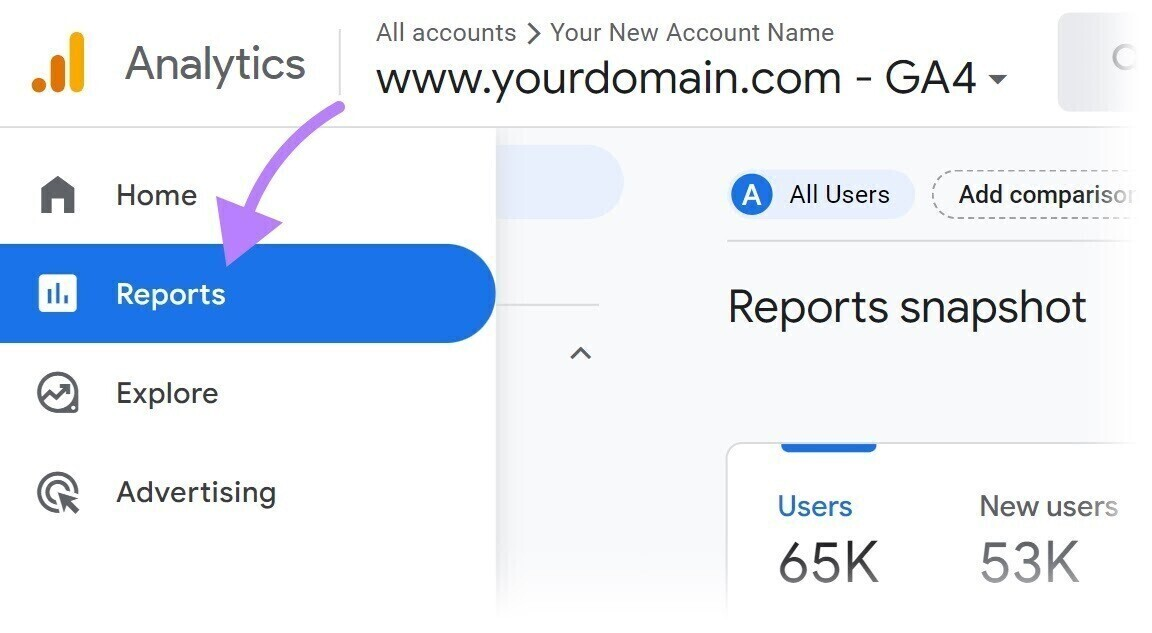
Then, click “Engagement” > “Pages and screens” in the drop-down menu.
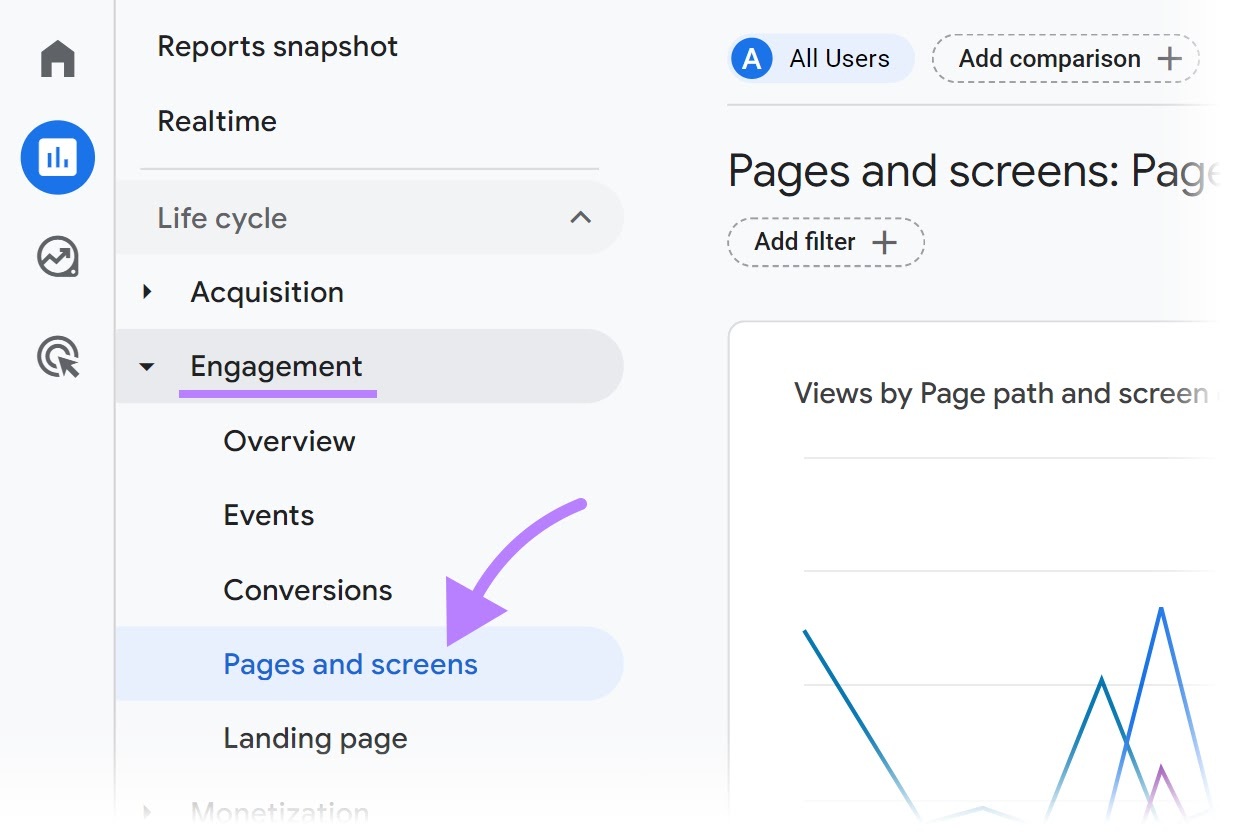
Below the line chart, you’ll see a table of your pages sorted by views in descending order. To sort by users, click the arrow next to “Users,” which appears on hover.
Notable engagement metrics for these pages include:
- Views per user: Average number of pages viewed per user
- Average engagement time: Average amount of time the page was in focus in the user’s browser
- Conversions: Number of times users triggered a conversion event
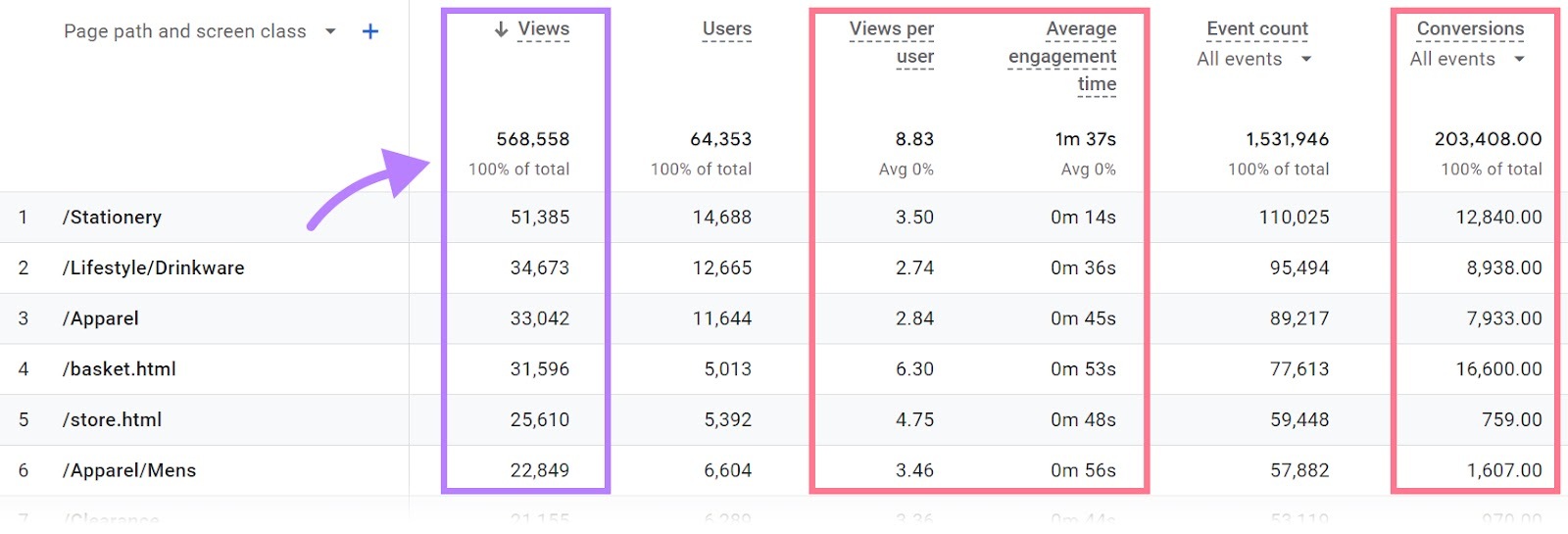
The average for each of these metrics is shown below the header. Look for pages with below-average Views per user and Average engagement time. These are pages you may want to consider updating first.
Further reading: Google Analytics for Beginners: Getting Started with GA4
Causes of Pogo-Sticking and Strategies to Minimize It
Mismatch Between Content and Search Intent
A mismatch occurs when a user visits your page, but your content doesn’t align with their expectations.
Solution: Align your content with search intent. Analyze the keyword intent before creating content. Your page should directly address what people are looking for.
Use the Keyword Overview tool to analyze intent.
Enter a keyword, select a country from the drop-down, and click “Search.”
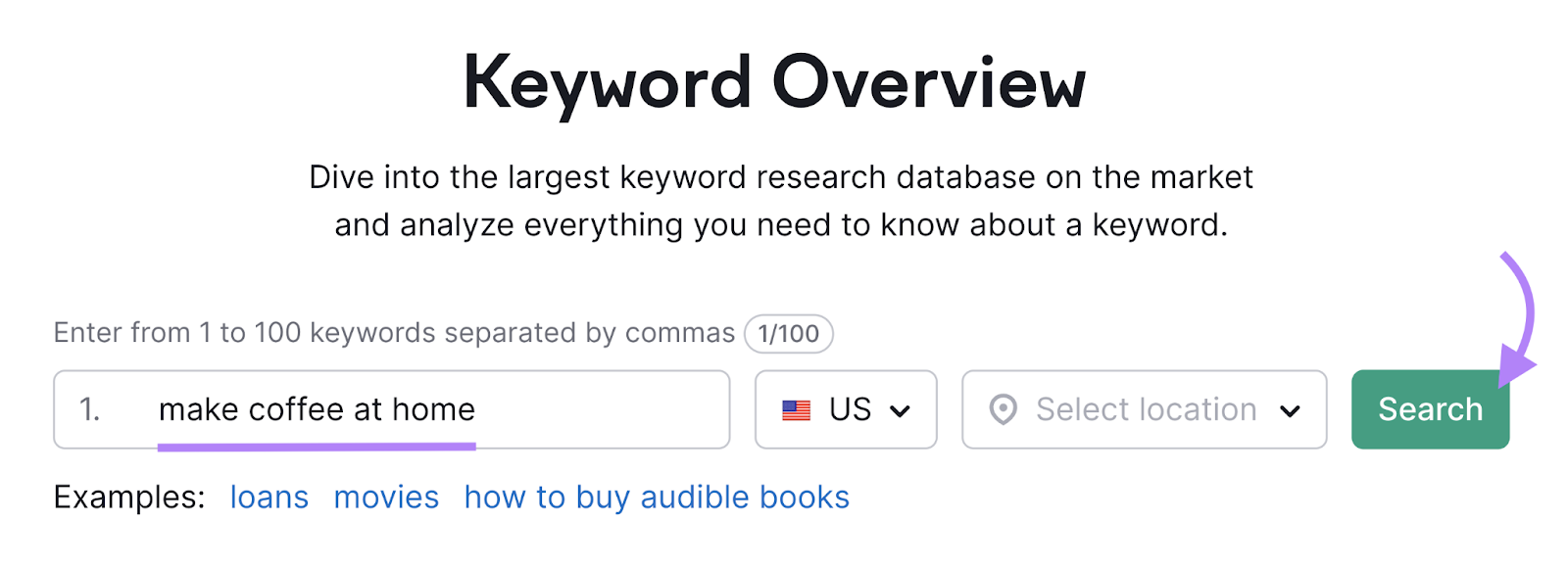
You’ll see a dashboard with metrics for the keyword. In this example, the search intent is “Informational.” The user likely wants to find information on how to make coffee at home.
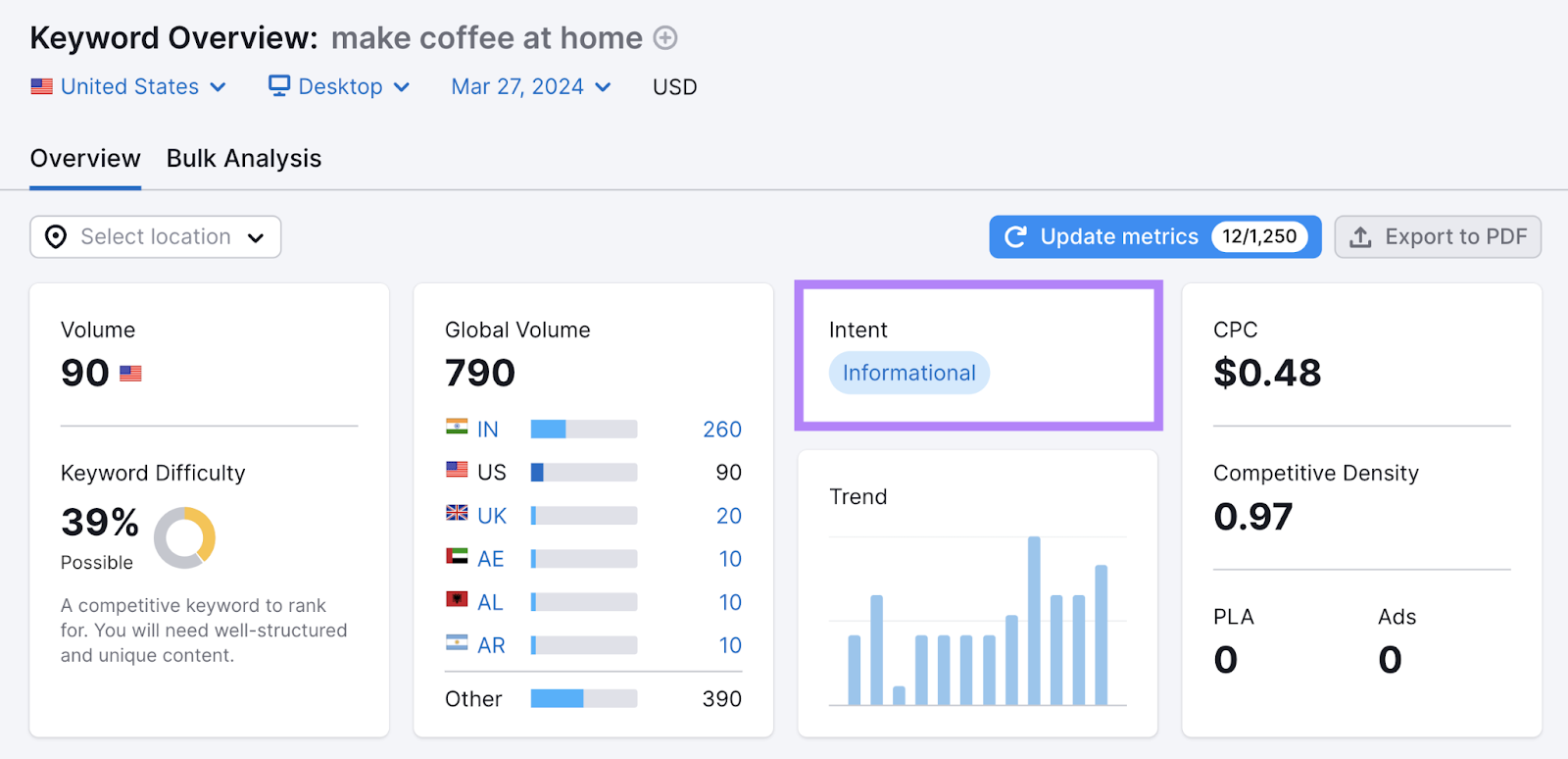
Should you target this keyword? Scroll down to “SERP Analysis.”
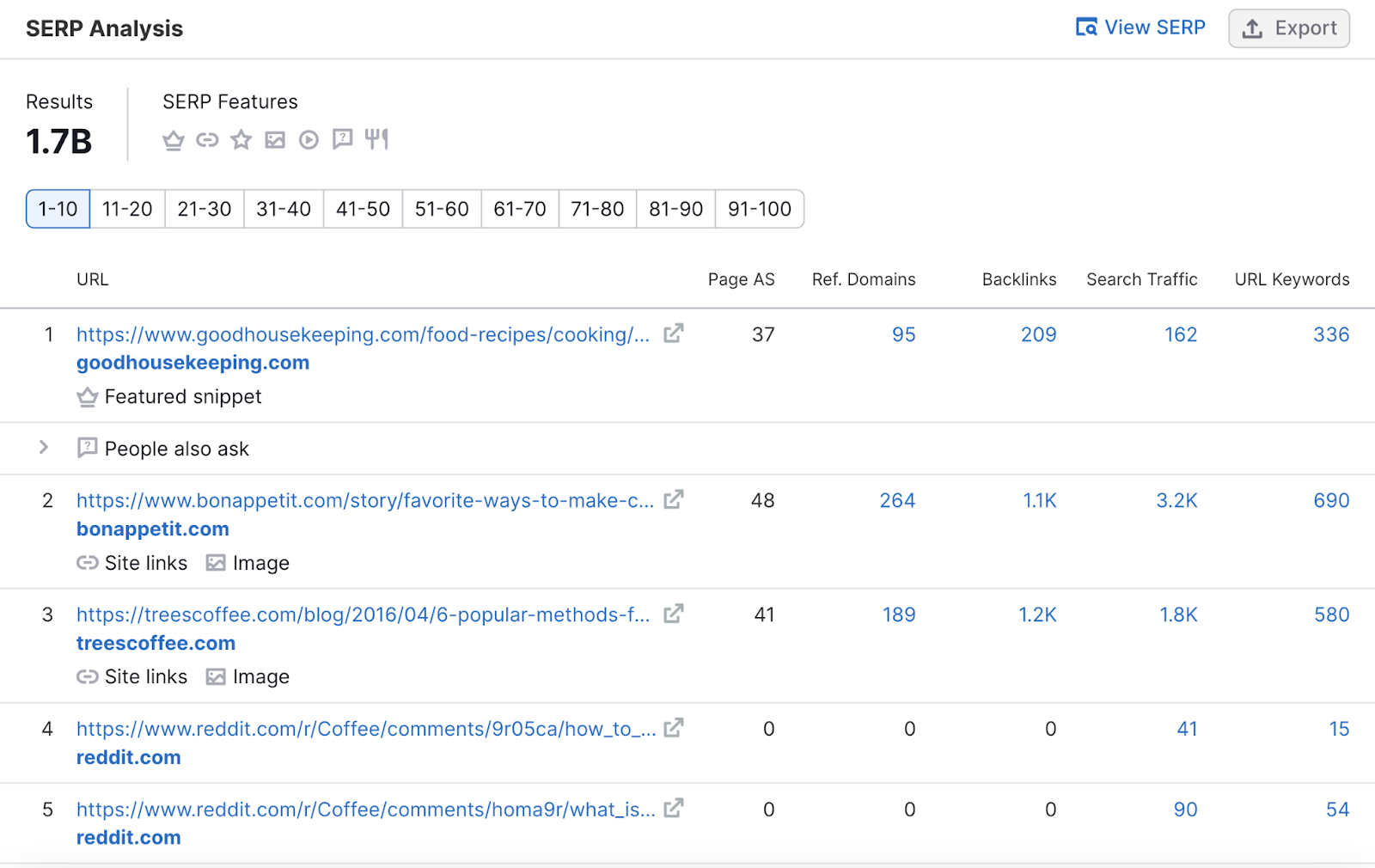
These results contain recipes or instructions. So, if your page includes instructions, you’ll likely match the searcher’s intent.
To ensure your content satisfies the user’s needs, analyze the top-ranking results for your keyword. Then, create better content.
Poor Readability
Readability is how easily your visitors can read and understand the content on your site.
If your site is difficult to read because of poor font choices or clashing color elements, for example, people could become frustrated and bounce back to the SERP.
Solution: Maintain good readability by using simple fonts and colors that are easy to read—such as a classic black font on white background.
Poor Accessibility
Accessibility is about making your site easy to use for all types of users, including people with disabilities.
If someone lands on your site and finds that it’s incompatible with their screen reader, the font is too small, or, again, the color contrasts make the text difficult to see and read, they might leave.
Solution: Ensure your site adheres to web accessibility guidelines. This can be done manually or with a plugin, if your site is on a platform like WordPress.
Further reading: How to Check Website Accessibility
Gated Content
Gated content—content hidden behind a form or paywall—can frustrate people who expect to view it immediately.
Solution: Avoid gating essential information. Visitors should be able to find what they need without facing a virtual roadblock. Otherwise, users may pogo-stick to one of your competitors.
If you have a valuable asset with the potential to generate leads—such as the Semrush Content Marketing Starter Kit—consider gating this content.
If you want someone to share their personal information, your content must be worth it. If possible, provide a preview or summary before asking for people’s information.
Consider gating these content types while still providing helpful overview information to help users understand the value:
- Free templates or tools
- White papers, ebooks, and reports
- Webinars
- Product demos
Slow Loading Times
In a Digital.com survey, 19% of respondents said they’ll leave a webpage that takes longer than 2-3 seconds to load.
In fact, the probability of people bouncing from your site jumps from 32% to 90% if your page takes longer than 3 seconds to load.
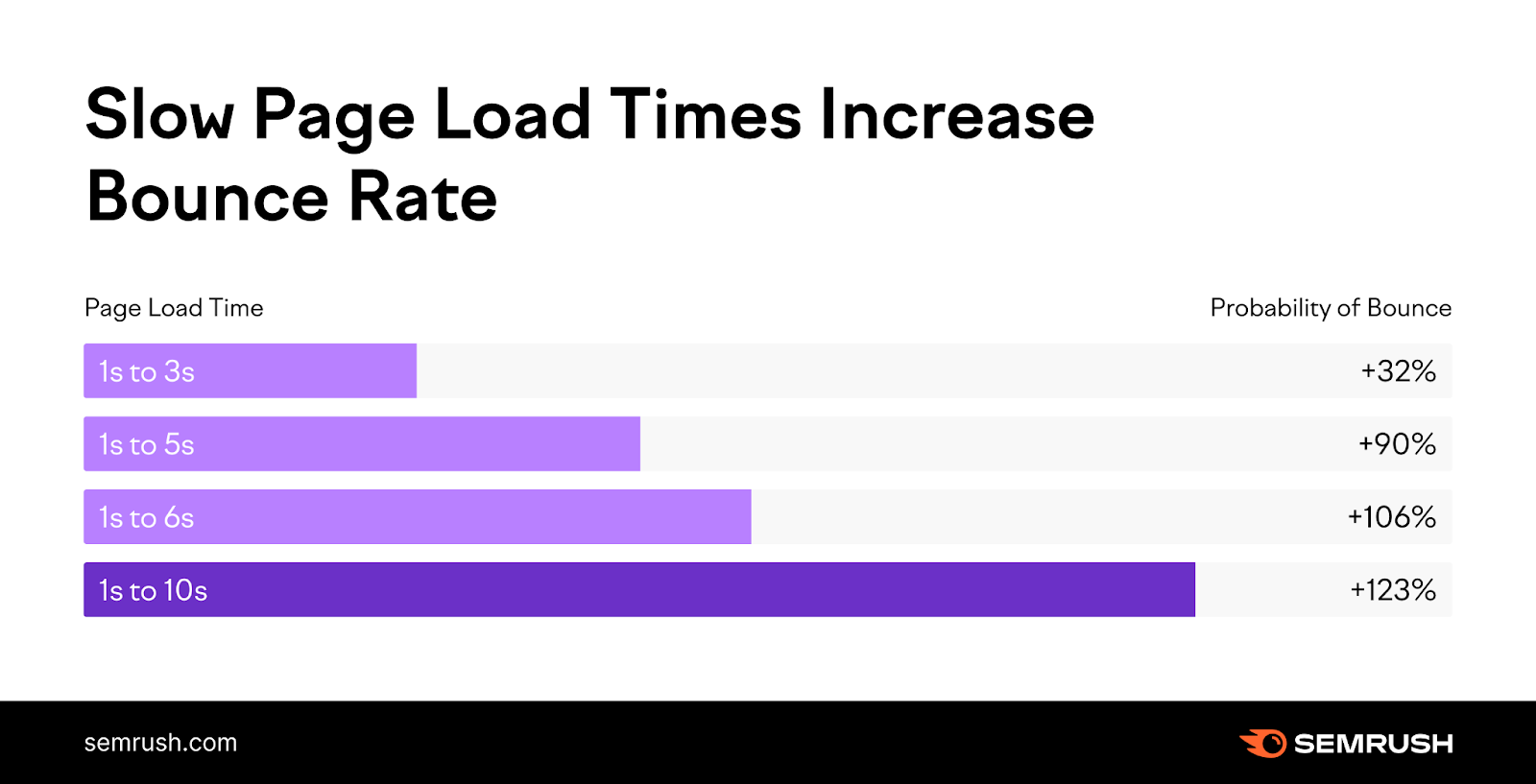
Solution: Here are a few ways to optimize page speed to keep visitors on your site:
- Compress images
- Enable browser caching
- Minify JavaScript, CSS, and HTML
- Reduce HTTP requests
- Use a content delivery network (CDN)
Analyze your page load times with the Site Audit tool.
To set up, click “Start Audit.”

A window will appear. Enter your domain and an optional project name (such as your brand name). Then click “Create project.”
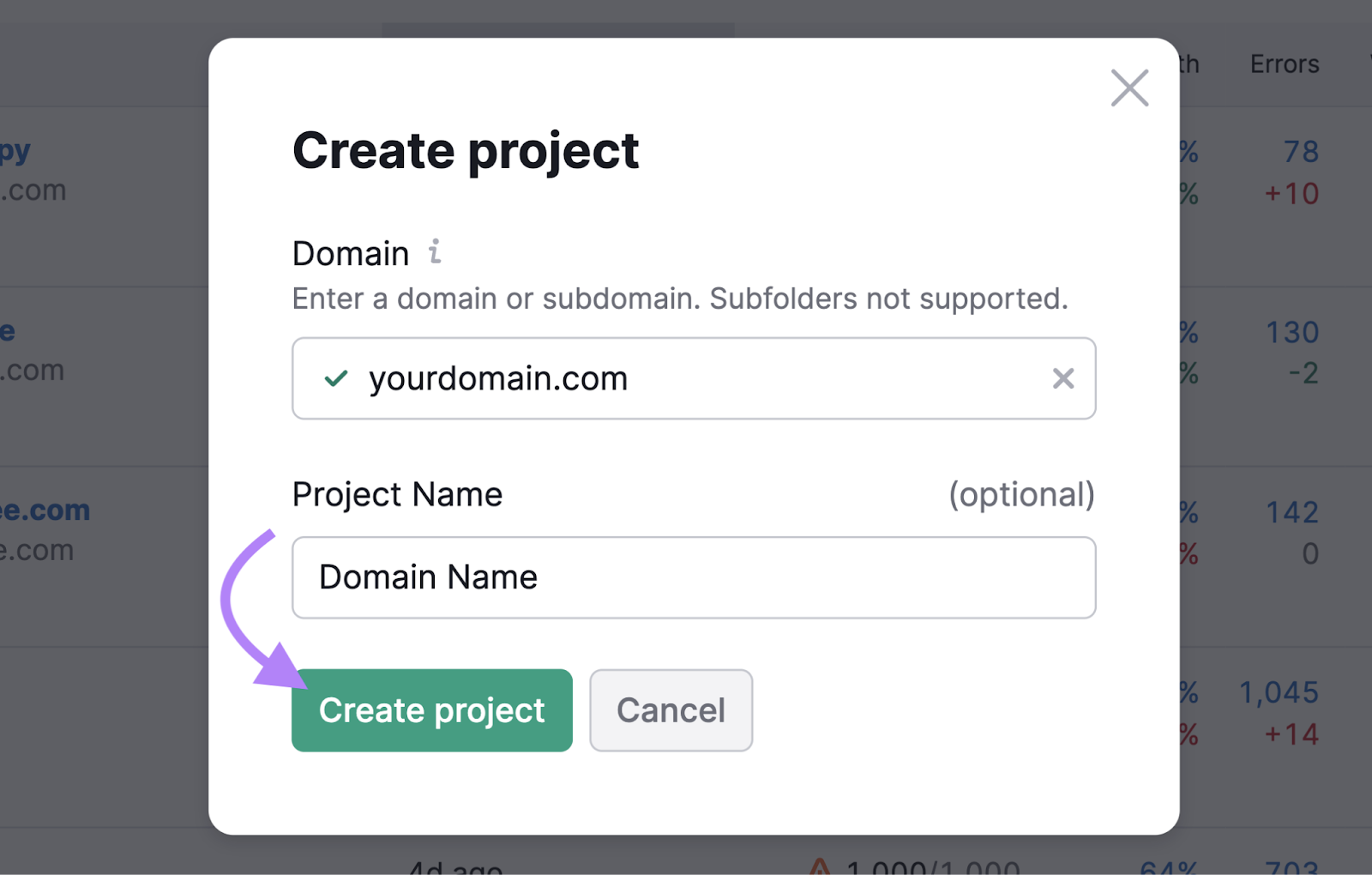
Next, configure the site audit and click “Start Site Audit.”
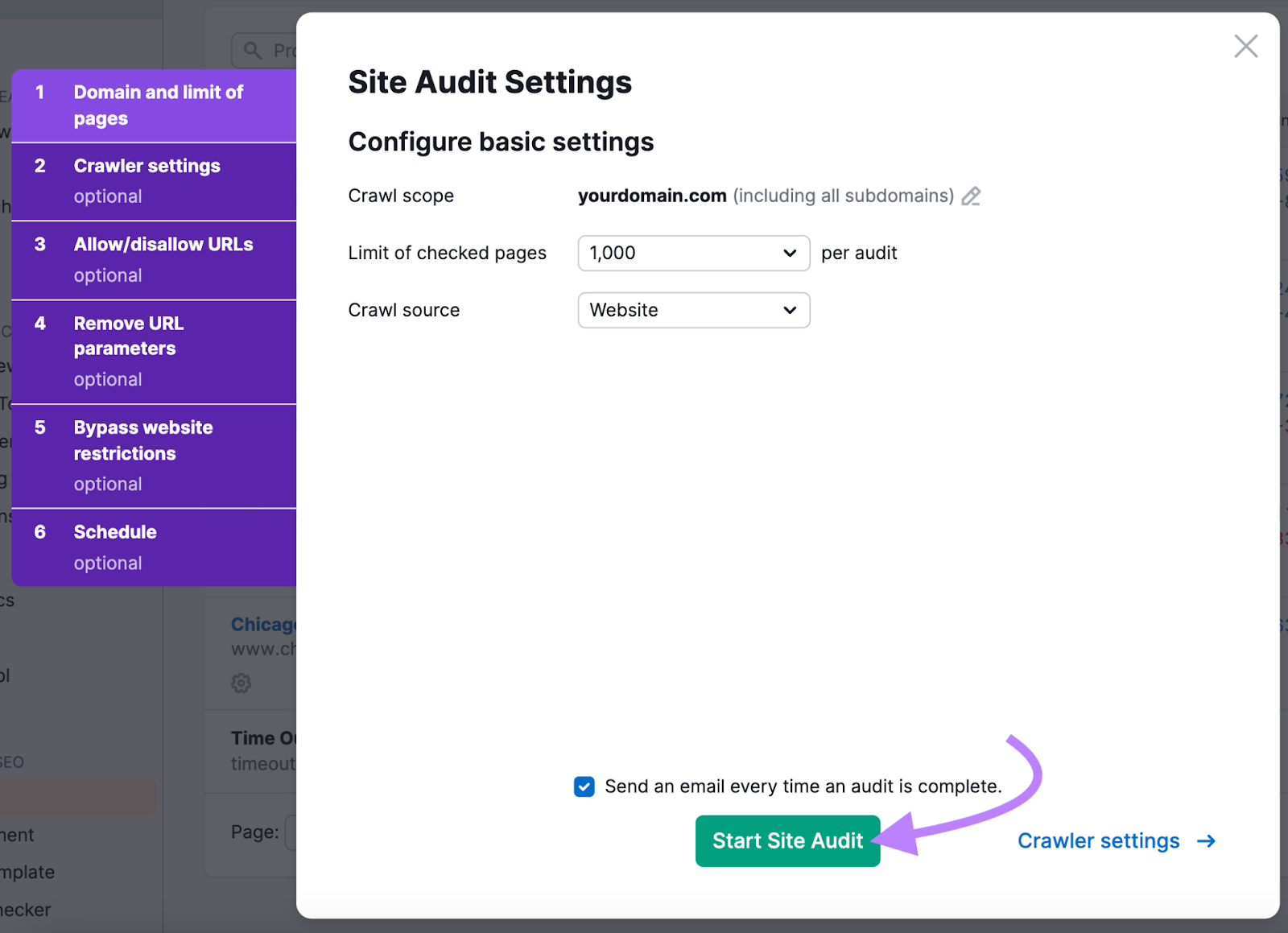
The time it takes to crawl your site depends on your site’s size. Plan to give it up to 24 hours.
Once completed, you’ll see a dashboard with an overview of your site’s health and related reports.
To check your load speed and performance issues, click “View details” in the “Site Performance” box.
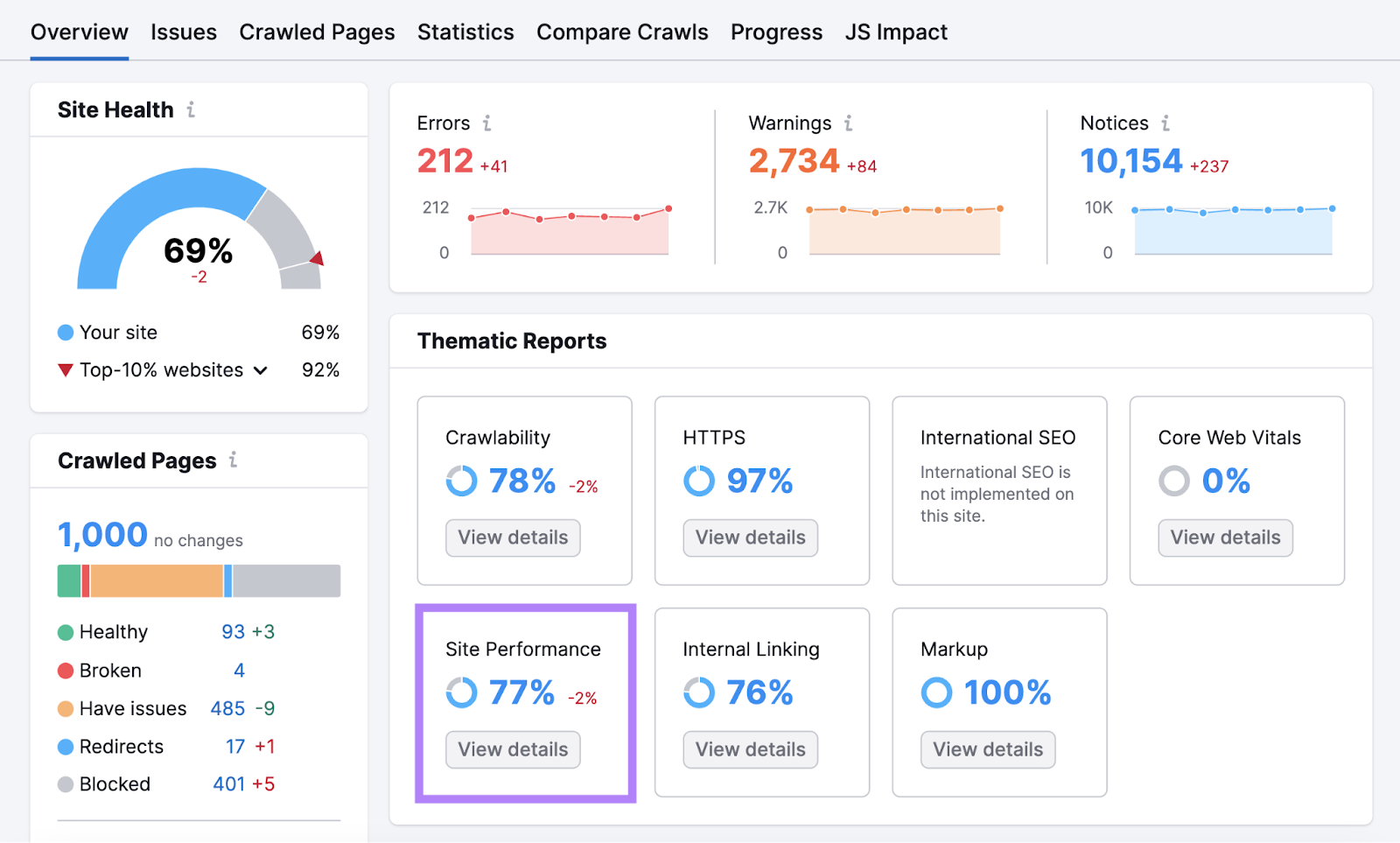
The tool will show a breakdown of load speeds and a list of performance issues. We recommend addressing the issues under “Errors” before moving on to “Warnings.”
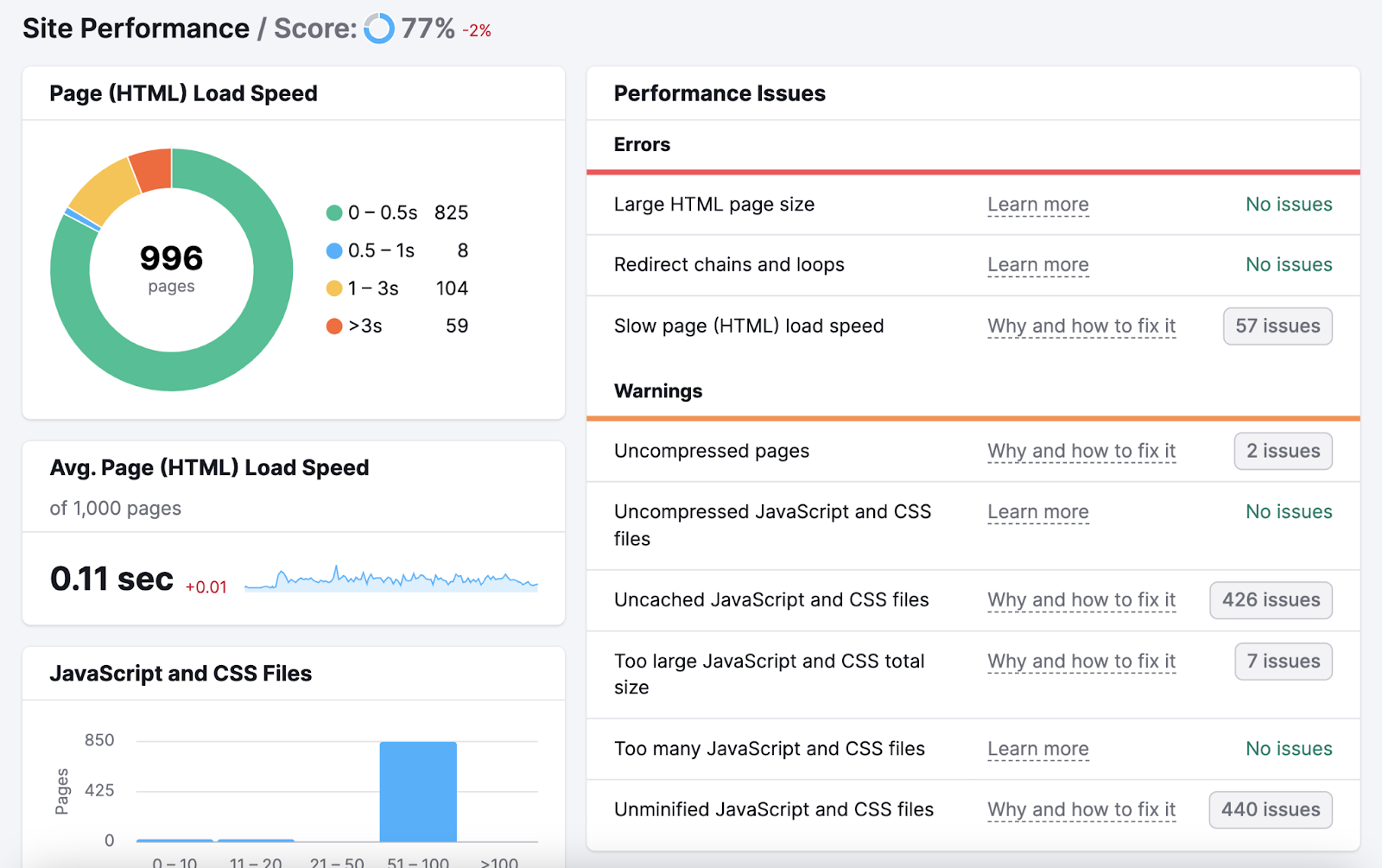
Overwhelming Number of Ads
Excessive ads can distract users and prevent them from engaging with your content. Dissatisfied or annoyed users could return to the SERPs.
Solution: Reduce ad intrusiveness:
- Control the number and placement of ads: Too many ads can clutter your site, slow down page loading, and distract users. Optimize how often and where they appear to balance them with content.
- Test and measure the impact of ads: Use analytics to evaluate how ads affect your page’s performance and engagement. Remove ads that harm engagement.
- Use alternative ad formats away from your site: Including paid search ads, social ads, and email ads
Intrusive Ads
Pop-ups disrupt people from consuming your content. They can annoy visitors and lead to quick exits.
Solution: Avoid intrusive ad formats, such as pop-ups, interstitial ads, and auto-playing videos.
If pop-ups bring you leads and newsletter subscribers, use them wisely and sparingly so they don’t hinder the overall user experience.
Poor Website Design
Cluttered layouts, outdated designs, and unresponsive sites can frustrate visitors and lead to pogo-sticking.
People may not have the patience to deal with tiny text, too-small buttons, or slow-loading pages.
Solution: Invest in a modern, SEO-friendly design that works well across devices.
Google prioritizes mobile-first indexing, assessing sites’ mobile versions to inform rankings. Opt for a responsive design to keep mobile visitors satisfied, which adjusts your site’s layout based on device specifications.
You can use Google’s Mobile-Friendly Test to evaluate how well your page will perform on mobile devices and identify issues to fix.
Further reading: SEO Web Design: 10+ Tips to Build a Better Website
Misleading Title Tags and Meta Descriptions
If users click on your search listing but find the content irrelevant, your title tag or meta description could be misleading.
If people land on the page and see the main heading doesn’t align with the title tag they saw, they may return to the SERP to look elsewhere.
Solution: Write accurate meta tags that align with your page’s content so visitors are met with the content they expect when clicking through.
Here’s an example of a meta description for the Semrush homepage that aligns with the page’s content:

Measuring Pogo-Sticking in SEO with Google Analytics
Unfortunately, you can’t measure pogo-sticking. You can see when a user lands on your site from the SERPs. And you can see from which page a user exits your site. But you can’t see where the user goes when they leave your site.
But you can analyze user behavior while they’re on your site. And mitigate pogo-sticking by improving user experience.
To measure factors related to pogo-sticking in Google Analytics, track bounce rates, average engagement time, and exit pages.
Learning from Success: A Case Study on Reducing Pogo-Sticking
Brian Dean, founder of Backlinko, shared how his team reduced pogo-sticking.
Here are some strategies:
- Understand user intent: Backlinko created content that directly addresses user queries. By aligning content with what users seek, they reduce the chances of pogo-sticking.
- Enhance user experience: Backlinko placed internal links strategically, especially above the fold. These links guide users deeper into the site, reducing the likelihood of returning to search results.
- Font size: Backlinko used a readable font size (at least 15pt) to ensure users don’t bounce due to readability issues
- Reducing bounce rate: Backlinko focused on minimizing bounce rates. Improved dwell time positively impacts SEO and user satisfaction.
Minimize Pogo-Sticking in SEO with Semrush
Many factors affect pogo-sticking in SEO: search intent, accessibility, page speed, and more.
By consistently evaluating your site’s performance and making adjustments to improve user satisfaction, you can minimize pogo-sticking.
Semrush gives you a comprehensive view of your site’s key metrics and SEO trends. Track page load speed, top page views, average CTR, and more, all in one platform. Try it for free!
Source link : Semrush.com
